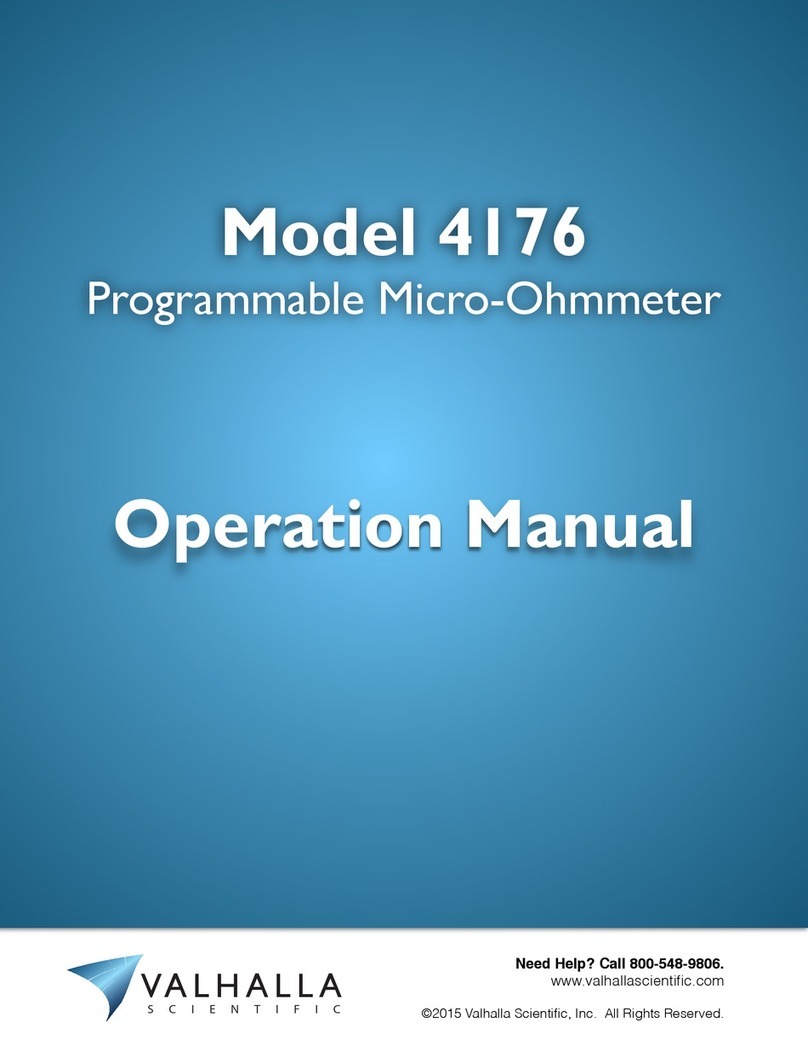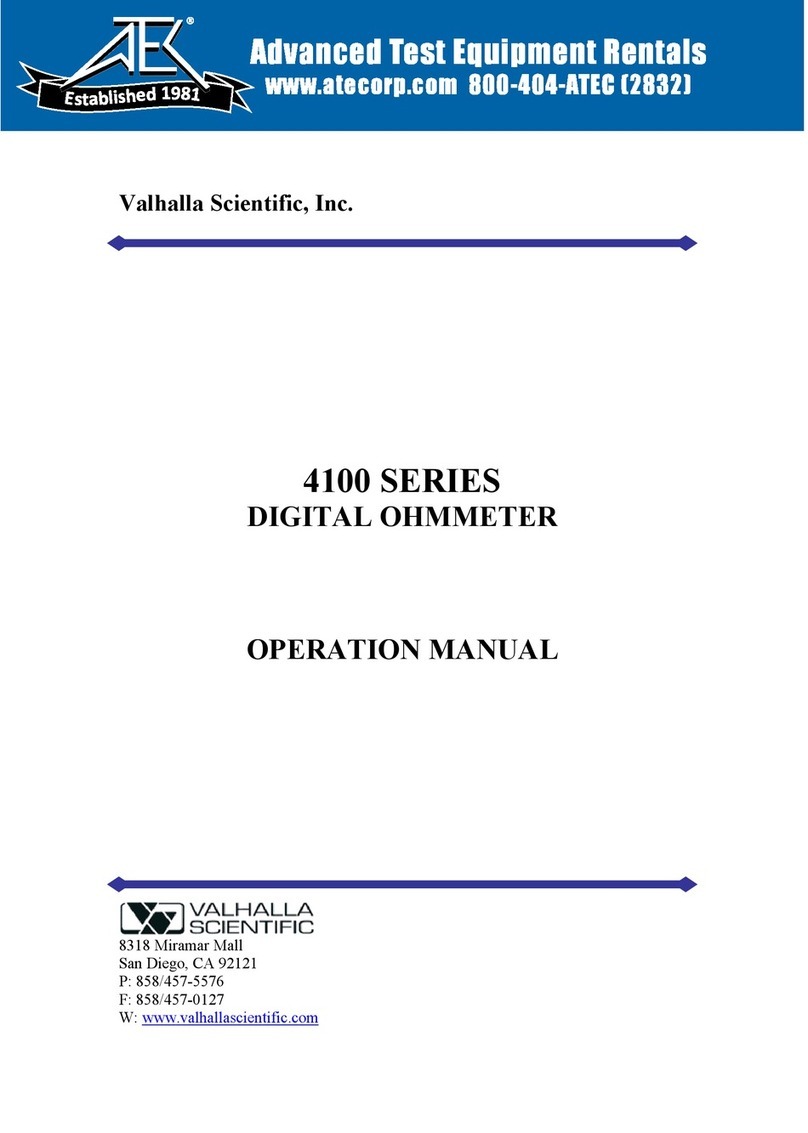
SECTION I UNPACKING & INSTALLATION
_______________________________________________________________
1-1. Introduction
The Valhalla 2300 Series of Power Analyzers
provides true RMS (AC+DC) measurements
of voltage up to 600 volts, current up to 100
amps and power up to 60 kilowatts per phase.
The maximum voltage and current input
limits may be extended through the use of
current and/or potential transformers. Nearly
every conceivable power measurement
application is discussed in later sections of
this manual.
In addition to the versatility of connections,
the 2300 Series boasts an optional computer
interface, available reduced voltage ranges for
greater resolution, high accuracy and excellent
frequency response. Recently added to the list
of options available for the Model 2301 is the
Valhalla Model 1000A High Current
Measurement System which enables the user
to directly measure up to 1000 amps of
current with many times the accuracy of a
clamp-on type current transformer. Please
refer to Section 3-2.
Read this manual thoroughly before
attempting to use the power analyzer!
Dangerous voltages are routinely present in
and connected to this instrument. This
instrument may be damaged by improper
connections to the rear input terminals.
Double check connections before applying
power.
For convenience, in future descriptions the
2300 Series of Power Analyzers will be
referred to as a "2300" unless specific
differences between models exist. In this case
the reader will be informed of any necessary
changes.
1-2. Inspection
If the shipping carton is damaged, request that
the carrier's agent be present when the unit is
unpacked. If the instrument appears damaged,
the carrier's agent should authorize repairs
before the unit is returned to the factory.
Even if the instrument appears undamaged, it
may have suffered internal damage in transit
that may not be evident until the unit is
operated or tested to verify conformance with
its specifications. If the unit fails to operate or
fails the tests of Section 2-7, notify the
carrier's agent and the nearest Valhalla Sales
Office. Retain the shipping carton for the
carrier's inspection. DO NOT return
equipment to Valhalla Scientific or any of its
sales offices prior to obtaining authorization
to do so.
1-3. Initial Adjustments
The only adjustments required prior to
operation of the 2300 are to set the rear panel
selector switch to the local AC line voltage
and to verify that the correct fuse for this
voltage is fitted. The supply voltages and
their corresponding fuses are listed below:
105 to 125 VAC, 50 to 400Hz 1 Amp Slo Blo
210 to 250 VAC, 50 to 400Hz 0.5 Amp Slo Blo
ENSURE THAT THE CORRECT LINE
VOLTAGE SELECTION IS MADE PRIOR
TO APPLYING POWER TO THE 2300!
1-4. Bench Use
The 2300 is delivered for operation in bench
use and special instructions for use in this
manner other than the procedures of Sections
4, 5 and 6 are not required.






























